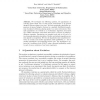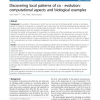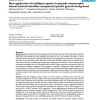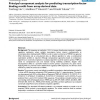20 search results - page 4 / 4 » Selection Intensity in Asynchronous Cellular Evolutionary Al... |
EPS
1998
Springer
13 years 9 months ago
1998
Springer
We investigate the following question. Do populations of evolving agents adapt only to their recent environment or do general adaptive features appear over time? We find statistica...
EVOW
2007
Springer
13 years 11 months ago
2007
Springer
Understanding the self-regulatory mechanisms controlling the spatial and temporal structure of multicellular organisms represents one of the major challenges in molecular biology. ...
BMCBI
2010
13 years 5 months ago
2010
Background: Co-evolution is the process in which two (or more) sets of orthologs exhibit a similar or correlative pattern of evolution. Co-evolution is a powerful way to learn abo...
BMCBI
2008
13 years 5 months ago
2008
Background: Few genetic factors predisposing to the sporadic form of amyotrophic lateral sclerosis (ALS) have been identified, but the pathology itself seems to be a true multifac...
BMCBI
2005
13 years 5 months ago
2005
Background: The responses to interleukin 1 (IL-1) in human chondrocytes constitute a complex regulatory mechanism, where multiple transcription factors interact combinatorially to...




